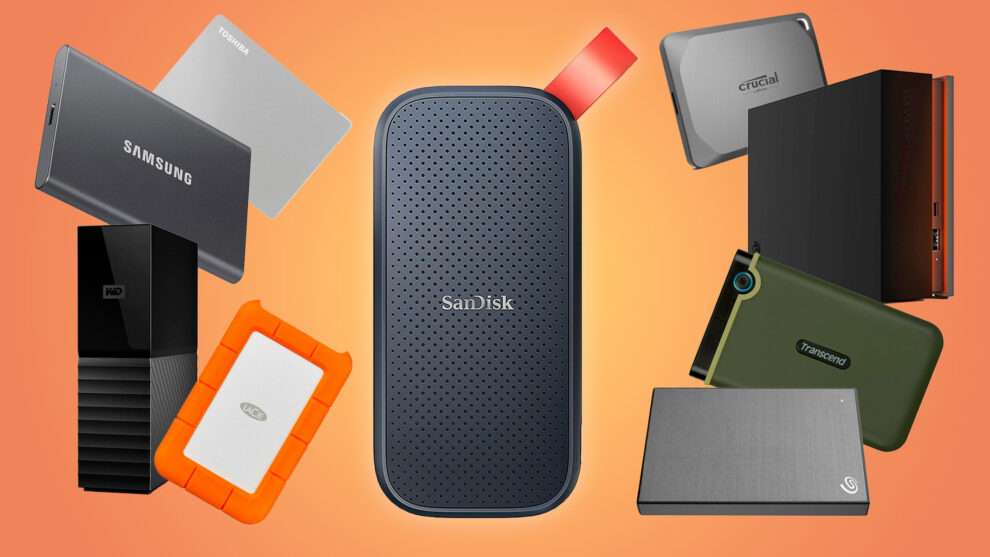External storage devices have undergone remarkable evolution, with manufacturers pushing boundaries in speed, capacity, and durability. The latest generation of portable drives offers unprecedented performance while maintaining competitive pricing, making high-capacity storage more accessible than ever before.

Samsung’s T9 Pro series dominates the premium portable SSD market, delivering exceptional performance with transfer speeds reaching 2,000MB/s through its USB 4.0 interface. The drive’s advanced thermal management system prevents performance throttling during intensive operations, while its reinforced aluminum chassis provides superior drop protection. Available in capacities up to 4TB, the T9 Pro particularly appeals to creative professionals handling large media files.
Western Digital’s Black series continues to impress with its gaming-focused P50 Game Drive SSD. The 2025 model introduces enhanced heat dissipation and shock resistance, ensuring stable performance during extended gaming sessions. Its proprietary gaming mode optimizes data transfer patterns for faster game loading times, while the rugged design withstands the rigors of portable gaming setups.
Seagate has revolutionized traditional hard drive storage with their Expansion Desktop series, now offering capacities up to 22TB in a single drive. The latest models incorporate advanced power management features and improved reliability through enhanced firmware algorithms. Their IronWolf Pro technology, previously reserved for NAS drives, has been adapted for external use, providing enterprise-level durability in consumer devices.

Crucial’s X10 portable SSD series brings professional-grade performance to mid-range price points. These drives utilize the latest QLC NAND technology combined with dynamic SLC caching, delivering sustained write speeds that rival more expensive competitors. The innovative chassis design incorporates passive cooling elements, maintaining optimal operating temperatures without requiring active ventilation.
LaCie’s Rugged series maintains its reputation for durability while pushing performance boundaries. The 2025 models feature improved water resistance ratings and enhanced shock protection, making them ideal for outdoor photography and fieldwork. The integration of Thunderbolt 4 connectivity provides seamless compatibility with professional workstations, while maintaining backward compatibility with USB interfaces.

SanDisk’s Extreme Pro Portable SSD V2 continues to excel in the professional photography and videography segment. The latest iteration features an expanded buffer size for handling high-bitrate video recording and improved thermal management for sustained performance. The drive’s SecurityPlus encryption system now includes biometric authentication options, adding an extra layer of data protection.
Toshiba’s Canvio Flex series addresses the growing need for cross-platform compatibility in mixed computing environments. These drives feature automatic formatting detection and adaptation, eliminating the need for manual reformatting when switching between operating systems. The included software suite provides comprehensive backup solutions and file synchronization across devices.
For budget-conscious users, Western Digital’s Elements series offers reliable storage at competitive price points. The 2025 models incorporate improved shock sensors and automatic head parking technology, enhancing data protection without significantly impacting costs. These drives prove particularly popular among users requiring large backup capacity without demanding high-speed transfers.
Buffalo’s DriveStation Ultra series targets the professional backup market with its hardware encryption processor and advanced data recovery features. The integrated UPS protection prevents data corruption during power failures, while the automated backup scheduling ensures consistent data protection. The drive’s enterprise-grade components provide exceptional reliability for critical data storage.
Emerging technologies have influenced storage device design significantly. The implementation of AI-driven wear leveling in SSDs extends drive lifespan by optimizing data distribution. Advanced error correction algorithms provide improved data integrity, while smart monitoring systems alert users to potential drive failures before data loss occurs.
Environmental considerations have become increasingly important in storage device design. Manufacturers have responded with more energy-efficient components and environmentally conscious packaging. Several companies now offer trade-in programs for older drives, ensuring proper recycling of electronic components.
Security features have evolved beyond basic password protection. Many drives now incorporate hardware encryption processors, biometric authentication, and secure erasure capabilities. Some models feature physical security elements like fingerprint readers integrated into their chassis.
Connectivity options have expanded beyond traditional USB interfaces. Thunderbolt 4 and USB 4.0 support enables faster data transfers, while maintaining compatibility with older systems. Some premium models include wireless connectivity options for convenient file access without physical connections.
Software ecosystems accompanying these drives have become more sophisticated. Backup solutions now incorporate cloud integration, allowing hybrid storage strategies that combine local and cloud backup. Mobile apps enable remote drive management and file access, adding convenience for users on the go.
Pricing remains competitive across all segments, with cost per terabyte continuing to decrease. Premium SSDs typically range from $100-300 for 1TB models, while high-capacity traditional hard drives offer better value for bulk storage needs. The market provides options suitable for various budgets and performance requirements.
Looking ahead, storage device development continues to focus on increasing capacity and performance while maintaining reliability. The integration of new technologies promises further improvements in data protection and user convenience, making external storage an increasingly essential component of modern computing environments.














Add Comment